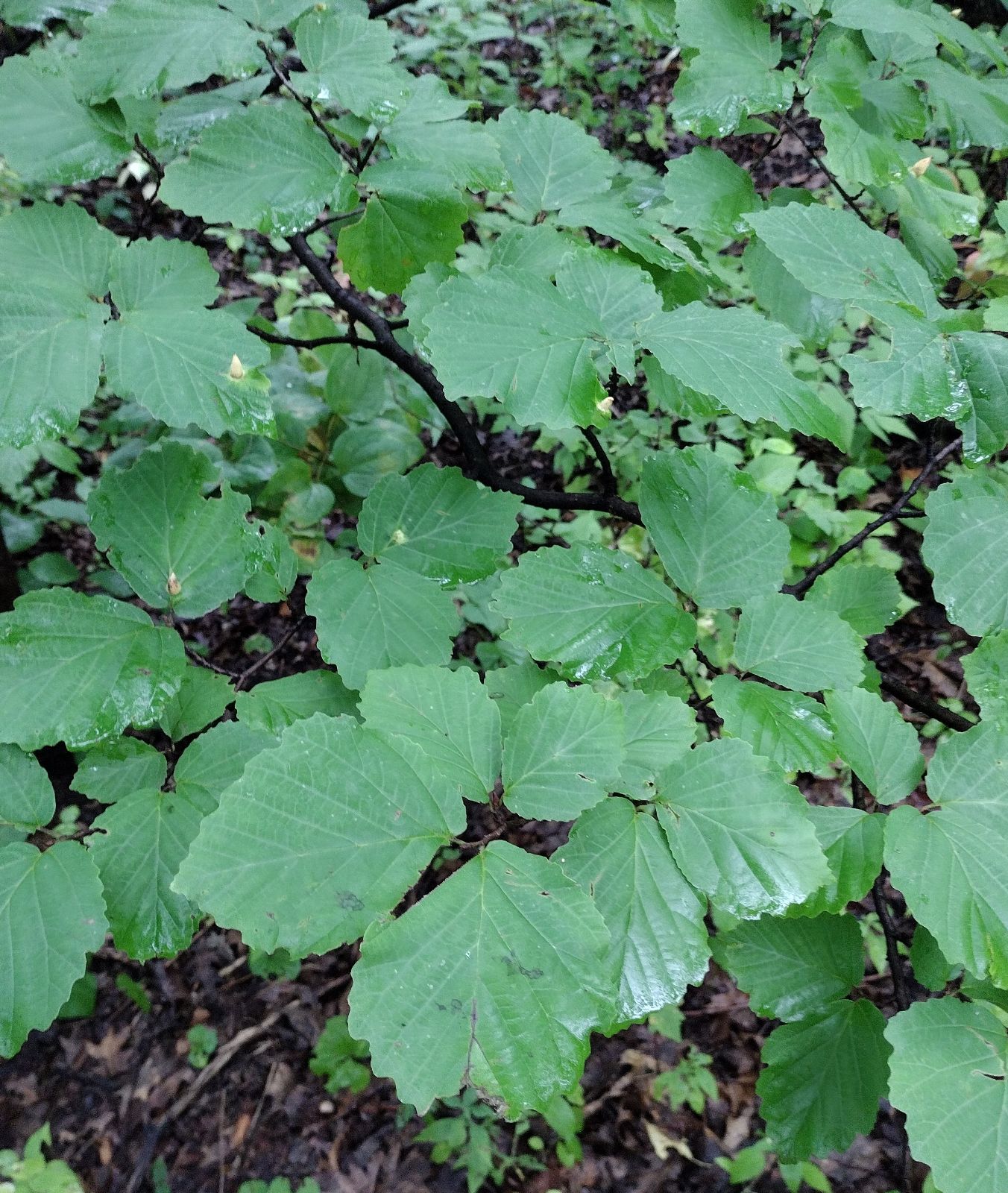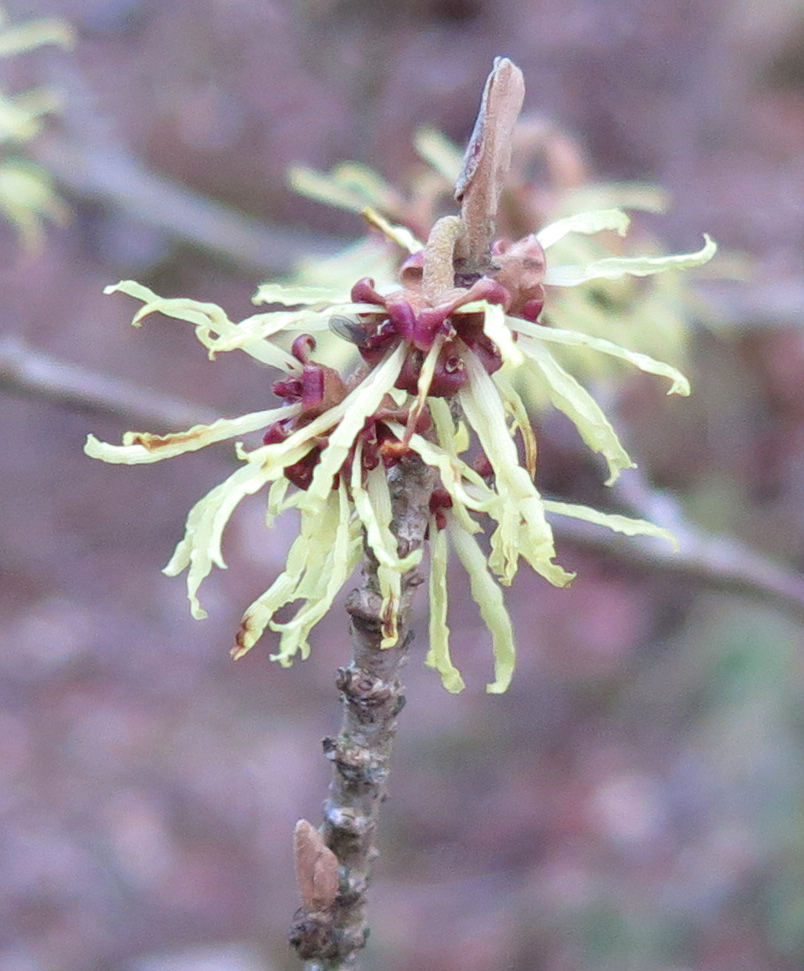Hamamelis
Sponsor
Kindly sponsored by
This genus has been sponsored and new text is being prepared.
Credits
Article from Bean's Trees and Shrubs Hardy in the British Isles
Recommended citation
'Hamamelis' from the website Trees and Shrubs Online (treesandshrubsonline.
Family
- Hamamelidaceae
Common Names
- Witch-Hazel
A remarkable and beautiful genus of small trees and shrubs, consisting of four or five species. They are distinguished very readily from all other hardy shrubs by the thin, narrow, yellow petals, sometimes 3⁄4 in. long, and only 1⁄16 to 1⁄12 in. wide. The leaves are alternate, and much resemble those of our native hazel. This resemblance led the early settlers in N. America to use branches of H. virginiana as divining-rods – as hazel twigs were (and still are) at home; to its supposed magic property it owes its popular name. The parts of the flower are in four.
The witch-hazels like a good, but not very heavy soil, and are benefited in a young or not well-rooted state if peat and leaf-soil are added. When established this is not necessary. The quaint habit of the species is one of their charms, but without interfering with this it is worth while to train up a leading shoot to obtain height, especially if the plants, as they often do, assume and retain a low, sprawling mode of growth. The Asiatic species graft easily on H. virginiana. It is best to establish a quantity of seedlings of the latter in pots, and put on the scions about the beginning of April, they should then be placed in gentle heat. Seeds, it must be remembered, frequently take two years to germinate.
An excellent account of the species and cultivars of Hamamelis by Roy Lancaster was published in Gardeners’ Chronicle, Vol. 167 (1970), Nos. 21–24 (May 22-June 12). There is also much useful information in H. J. Grootendorst’s Hamamelis, published in Dendroflora, No. 2 (1965). To both of these works we are indebted for some of the information about the newer cultivars given here.
From the Supplement (Vol.V)
The report on Hamamelis in Dendroflora referred to on page 316 is now out of date; a later one was published in No. 17 (1980), pp. 9–17, with a summary in English. Other recent articles on the genus are:
Brown, G.E. – ‘Growing Witch Hazels’, Journ. R.H.S., Vol.99, pp. 15–19 (1974).
Carder, Vera A. – ‘Some Notes on the Witch-hazels at Kew’, Journ. R.H.S., Vol. 99, pp. 11–15 (1974).
Lamb, J.G.D., and Nutty, F. – ‘The Propagation of Hamamelis’, The Plantsman, Vol. 6 (1) pp. 45–8 (1984).
Stimson, M. – Two articles in Gard. Chron., April 11, pp. 28–9 and April 25, p. 17 (1980).
Weaver, Richard E. – ‘The witch hazel family’, Arnoldia, Vol. 36, pp. 84–91 (1976).
Wright, D. ‘Hamamelidaceae, a survey of the genera in cultivation’, The Plantsman, Vol. 4 (1), pp. 38–44 (1982). See also op. cit., Vol.4 (2), p. 126 and Vol. 4 (3), p. 192.



